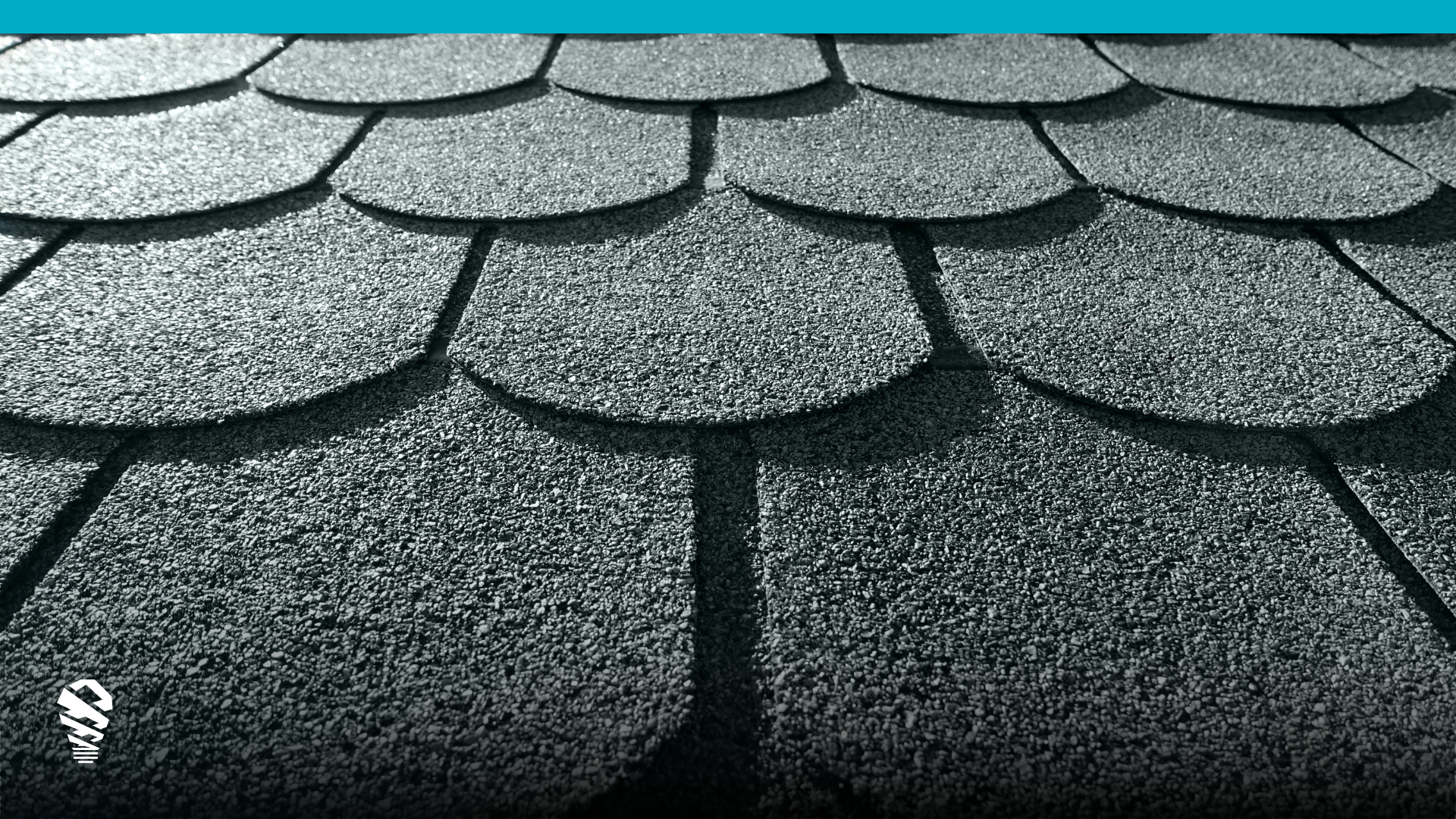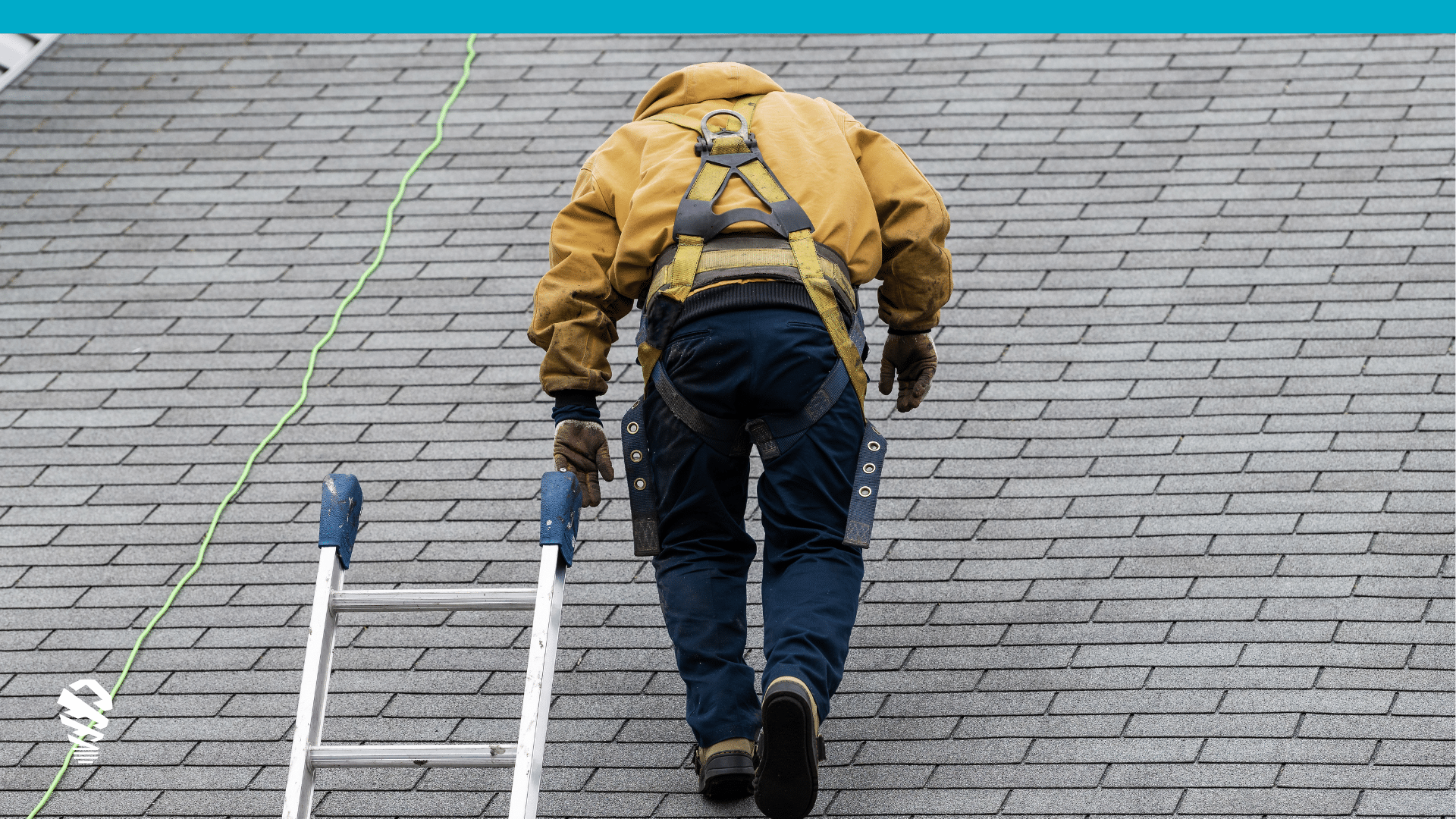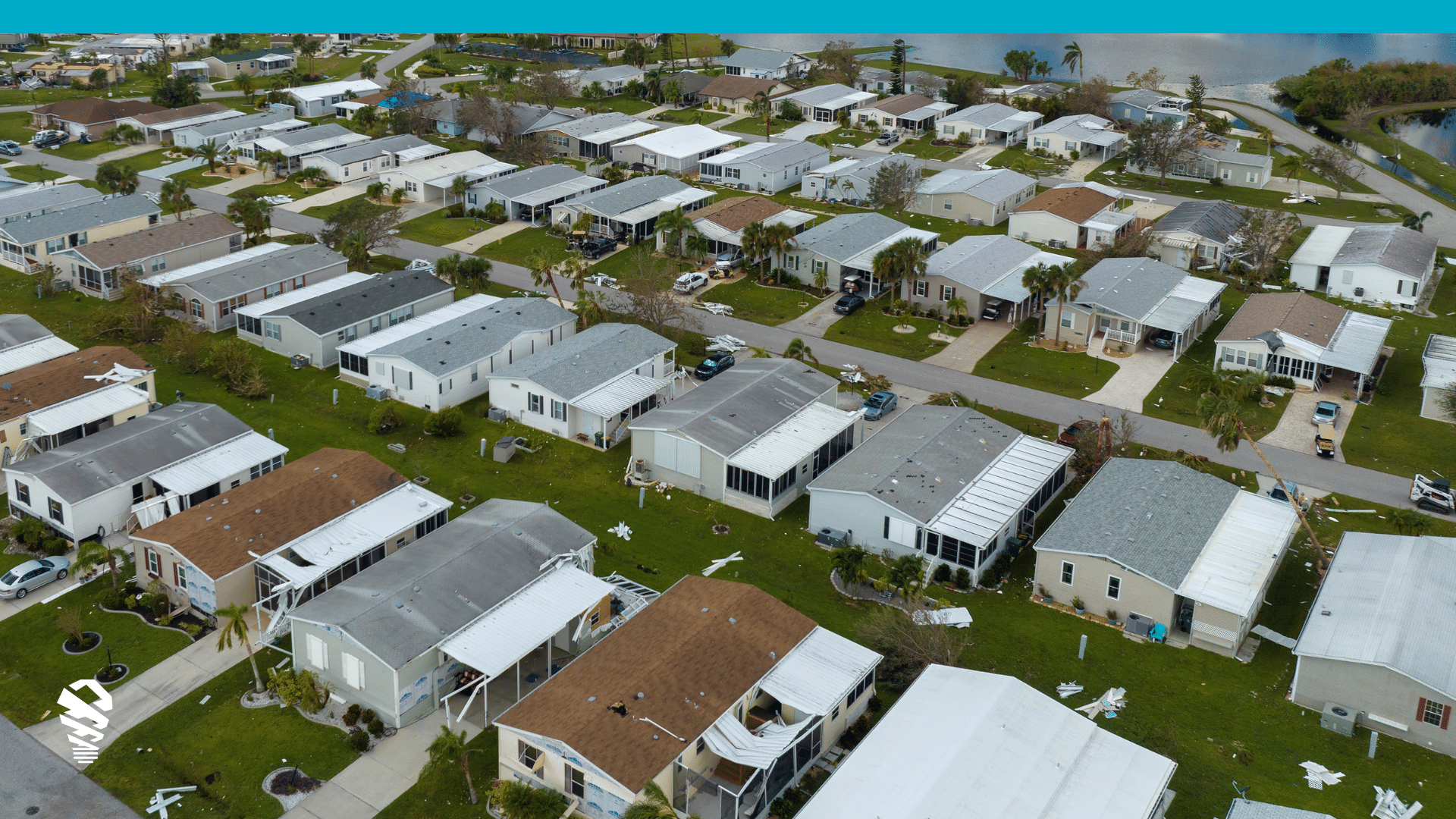When it comes to roofing, one term you’ll often hear is “roofing square.” This unit of measurement is crucial for anyone involved in roofing projects, whether you’re a contractor or a roofing professional. In this blog, we’ll explore what a roofing square is, why it’s used, and how to measure and calculate roofing squares accurately. We’ll also cover test squares, introduce Speed Squares, and discuss how IMGING Detect, along with integrations with Xactimate and RoofWriter, provides quick and precise roof measurements. This comprehensive guide will equip you with the knowledge needed to effectively plan and execute roofing projects.
What is a Roofing Square?
A roofing square is a unit of measure used in the roofing industry. One roofing square is a section of the roof 10’ by 10’ equal to 100 square feet of roof surface. This measurement simplifies the estimation of materials needed for roofing projects, making it easier to calculate costs and ensure that enough materials are purchased.
Why Are Roofing Squares Used?
Roofing squares are used because they provide a standardized way to measure and estimate roofing materials. This standardization helps:
- Simplify Calculations: Instead of dealing with large numbers, roofing professionals can work with more manageable figures.
- Streamline Communication: Using a common unit of measure helps ensure that everyone involved in the project, from contractors to suppliers, is on the same page.
- Consistent Pricing: Roofing squares allow for consistent pricing models across the industry, making the bidding process more straightforward.
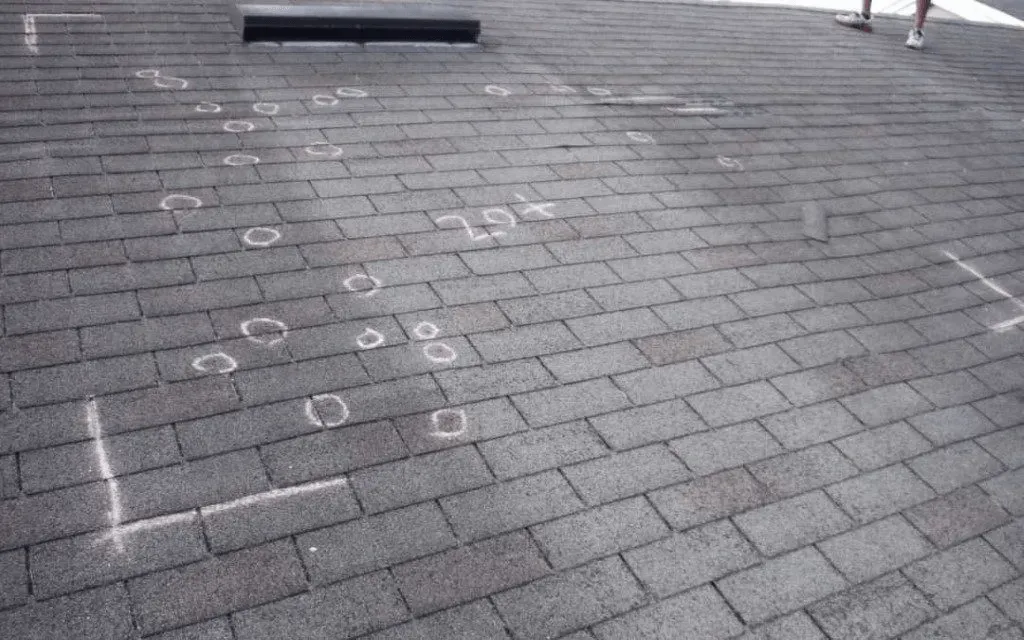 Roofing squares are also used as test squares where damage is measured and then extrapolated across the whole roof. This will be covered in detail later in the article.
Roofing squares are also used as test squares where damage is measured and then extrapolated across the whole roof. This will be covered in detail later in the article.
Instructions on Measuring Roof Square Footage
The traditional way of measuring your roof’s square footage involves a few simple steps:
- Draw a Diagram: Sketch a diagram of your roof, including all sections.
- Measure Each Section: Use a measuring tape to determine the length and width of each section of your roof.
- Calculate the Area: Multiply the length by the width for each section to get the square footage.
- Add It All Up: Add the square footage of all sections to get the total square footage of your roof.
For example, if you have a rectangular roof that is 20 feet long and 10 feet wide, the area would be: 20 ft×10 ft=200 sq ft
Determining the Roof Pitch Factor
The pitch of your roof affects the actual surface area. The pitch factor accounts for the slope of the roof. Here’s how to determine your roof pitch:
- Measure the Rise: Measure the vertical rise over a 12-inch horizontal run.
- Find the Pitch Factor: Use a pitch factor chart or calculator. Common pitch factors include:
- Flat to 3/12 pitch: 1.00
- 4/12 pitch: 1.054
- 5/12 pitch: 1.083
- 6/12 pitch: 1.118
- 7/12 pitch: 1.158
- 8/12 pitch: 1.202
- 9/12 pitch: 1.250
- 10/12 pitch: 1.302
- 11/12 pitch: 1.357
- 12/12 pitch: 1.414
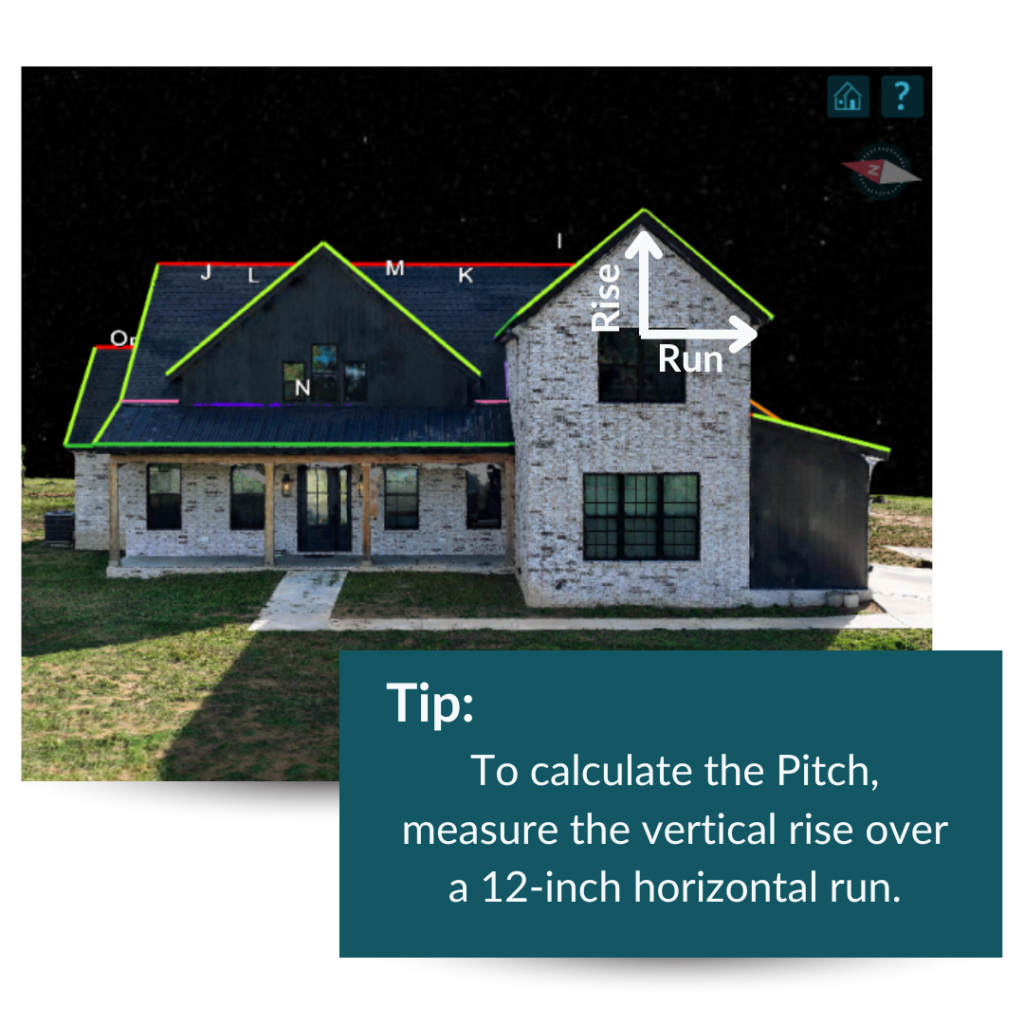
Understanding Waste Percentage in Roofing
When planning a roofing project, it’s essential to account for waste percentage. The waste percentage refers to the extra materials needed beyond the actual roof size to accommodate cuts, overlaps, and mistakes. Here are some key points to consider:
- Standard Waste Percentage: Typically, a waste percentage of 10-15% is added to the total roofing material estimate. This accounts for the inevitable waste that occurs during installation, especially on more complex roofs.
- Factors Affecting Waste:
- Roof Complexity: Roofs with many valleys, hips, and dormers will have higher waste percentages due to the increased number of cuts and overlaps.
- Material Type: Different roofing materials have different waste factors. For instance, asphalt shingles might have less waste compared to tiles or metal roofing.
- Roof Size: Smaller roofs often have a higher waste percentage because the proportion of cut pieces is greater relative to the total area.
- Calculating Waste:
- Simple Roofs: For simple gable roofs with few features, use a waste percentage of around 10%.
- Complex Roofs: For more complex roof structures, consider increasing the waste percentage to 15% or even 20% for extremely intricate designs.
- Professional Estimates: Always consult with a roofing professional to get the most accurate waste percentage for your specific project.
- Practical Tips:
- Order Extra Material: It’s always better to have a little extra material than to run short during the project. Unused materials can often be returned or used for repairs.
- Keep Offcuts: Save larger offcuts and unused materials for patching or future repairs, reducing the need for additional purchases.
By accurately accounting for waste percentage, you can ensure that your roofing project runs smoothly and efficiently, avoiding unnecessary delays and costs.
Calculating Roofing Squares
To calculate the number of roofing squares needed for a project, follow these steps:
- Calculate the Total Square Footage: Measure the total area of the roof in square feet.
- Adjust for Roof Pitch: Multiply the total square footage by the pitch factor to account for the slope of the roof.
- Divide by 100: Since one roofing square equals 100 square feet, divide the adjusted square footage by 100.
- Add Waste Percentage: Increase the calculated roofing squares by the waste percentage to ensure you have enough material.
Example Calculation
Let’s say your total roof square footage is 2000 square feet, and your roof has a pitch factor of 1.158. You also want to account for a waste percentage of 15%.
Step 1: Calculate Total Adjusted Square Footage
- Total square footage = 2000 sq ft
- Pitch factor = 1.158
- Adjusted square footage = 2000 sq ft * 1.158 = 2316 sq ft
Step 2: Calculate Roofing Squares
- Adjusted square footage = 2316 sq ft
- Roofing squares = 2316 sq ft / 100 = 23.16 squares
Step 3: Account for Waste Percentage
- Waste percentage = 15%
- Waste factor = 1 + (15/100) = 1.15
- Roofing squares including waste = 23.16 squares * 1.15 = 26.63 squares
So, for a roof with total square footage of 2000, a pitch factor of 1.158, and accounting for a 15% waste percentage, you would need approximately 26.63 roofing squares. It’s always advisable to round up when ordering materials to ensure you have enough to complete the project.
Test Squares for Hail Damage Claims
Test squares are the industry standard for manual roof inspections of hail damage for insurance claims. Here’s how they are used and what the industry standard is:
Defining a Test Square: A test square is a single square marked on the roof to act as a proxy for the entire roof, it is then inspected for hail damage.
Inspecting for Damage: Within this test square, a roofer or inspector will look for signs of hail impact, such as dents, bruises, or broken shingles.
Industry Standard for Hail Damage Claims: The industry standard often requires a certain number of hail impacts within the test square to qualify for a claim. For instance, some insurance companies may require 8-10 hits per test square to approve a hail damage claim.
Documentation: The findings from the test square are documented and used to support insurance claims, ensuring that there is clear evidence of damage over a standardized area.
The New Way to Inspect Roofs
Instead of manual inspection where you climb on the roof, you can now analyze drone-captured photos with our AI-powered damage detection technology developed using a database of millions of images of roof damage. Our system instantly identifies various damage types, providing rapid, precise results. Identifying and assessing roof damage has never been more efficient or accurate. Test squares are no longer necessary when you can accurately get a damage report for the entire roof in minutes. You can also include customers in your inspections by having them look as you look, which can be powerful for people since most don’t climb roofs to inspect their own homes.
What is a Speed Square?
A speed square is a tool used for quick measurements in roofing projects. It helps roofers:
Total Square Count and Square Feet for Ordering Material: Speed squares provide quick estimates of total roof square footage, aiding in the accurate ordering of materials.
Quick Estimate: They allow for rapid measurements and calculations, making it easier to estimate the total roofing squares needed for a project.
Speed Squares Using IMGING Detect
IMGING Detect, developed by Loveland Innovations, leverages cutting-edge AI technology to revolutionize roof damage detection. This advanced tool uses sophisticated algorithms to provide accurate and efficient damage assessments. Additionally, at no extra cost, you can quickly obtain speed squares for your roofing projects. With the ability to use any drone to gather comprehensive roof data, IMGING Detect streamlines the entire process, from damage detection to material estimation, enhancing both accuracy and efficiency.
Integrating IMGING with Xactimate
IMGING seamlessly integrates with Xactimate, a leading platform in the insurance and construction industries known for creating detailed repair and restoration estimates. By utilizing IMGING’s advanced technology, roofers can capture high-resolution images and precise measurements of the roof, specifically in terms of roofing squares. This data is then effortlessly imported into Xactimate, allowing for the rapid generation of highly accurate estimates based on real-time roof assessments. This integration streamlines the estimation process, reduces the need for re-inspections, and ensures that estimates are based on the most precise and up-to-date information, significantly enhancing workflow efficiency and accuracy when calculating the required roofing squares.
Using RoofWriter with IMGING
RoofWriter, when used with IMGING, provides roofing professionals with an efficient and precise tool for creating comprehensive roofing reports. By leveraging IMGING’s detailed inspection data and AI-driven damage detection, RoofWriter enhances the accuracy of roofing estimates, including the calculation of roofing squares. This integration allows for easy attachment and submission of measurement data, diagrams, and photos, resulting in detailed and professional Xactimate estimates and .ESX files. The combined use of IMGING and RoofWriter ensures that all findings are meticulously documented, improving credibility and trust with clients and insurers, and facilitating efficient and accurate roofing estimations.
Accuracy with Technology
Modern tools and technologies, such as IMGING Detect, use roofing squares to provide precise measurements. These tools integrate with other software platforms, enhancing accuracy and efficiency in estimating and planning roofing projects. The use of technology ensures that measurements are accurate, reducing material waste and ensuring better project planning. With AI-powered damage detection and comprehensive roof checks, the need for traditional test squares is diminished. This innovative approach provides rapid, precise results for the entire roof in minutes, allowing for a more efficient and effective inspection process. Including customers in these inspections can also be powerful, as they can see the roof’s condition in real time without needing to climb onto it themselves.
Conclusion
Roofing squares are an essential unit of measurement that simplify calculations, ensure accurate material estimation, and provide consistency in pricing for roofing projects. They streamline workflows and uphold professional standards across the roofing industry. By using roofing squares, roofing professionals can deliver high-quality work efficiently and cost-effectively.
Advancements in technology, such as IMGING Detect, further enhance the utilization of roofing squares by providing precise measurements through AI-driven damage detection and drone-based data collection. These tools integrate seamlessly with platforms like Xactimate and RoofWriter, enhancing accuracy and efficiency in estimating and planning roofing projects. With these modern tools, roofers can reduce material waste, ensure better project planning, and improve their overall workflow, making the process of utilizing roofing squares straightforward and effective.

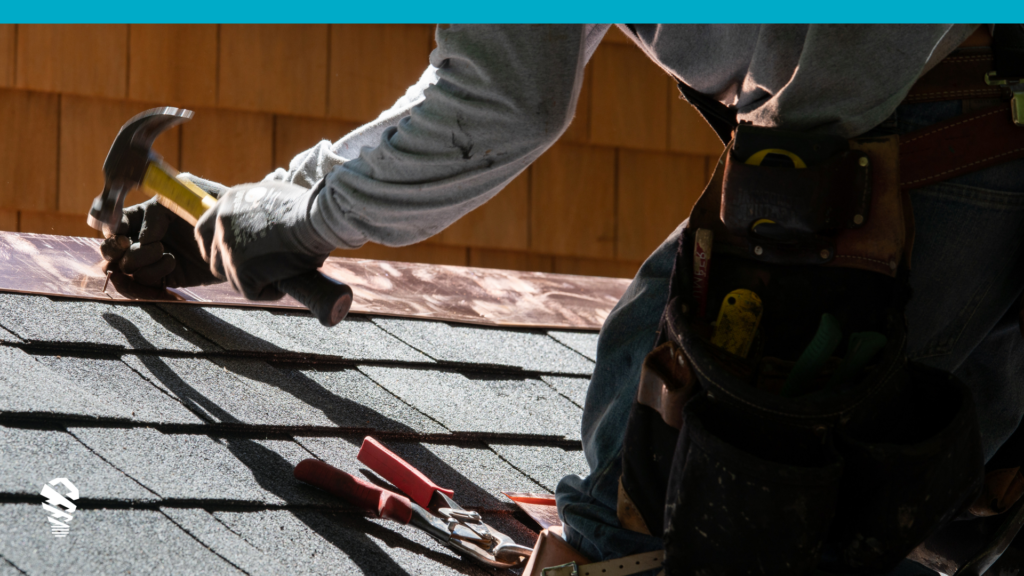
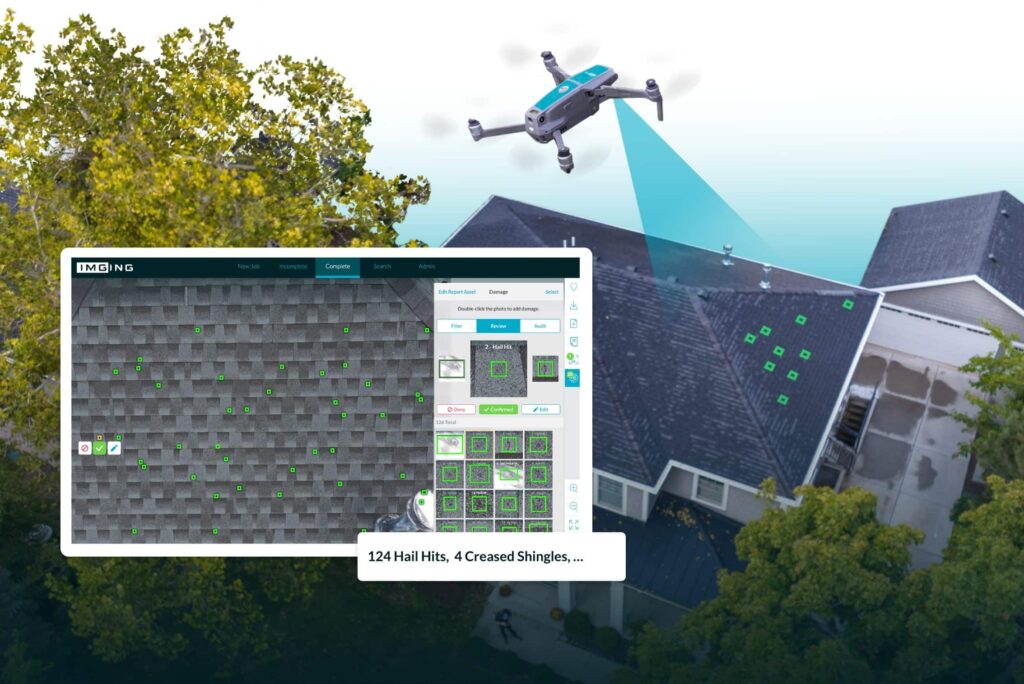

![How to Measure a Roof With a Drone [Updated April 2023]](https://www.lovelandinnovations.com/wp-content/uploads/2024/04/How-to-Measure-a-Roof-With-a-Drone-Updated-April-2023.png)
